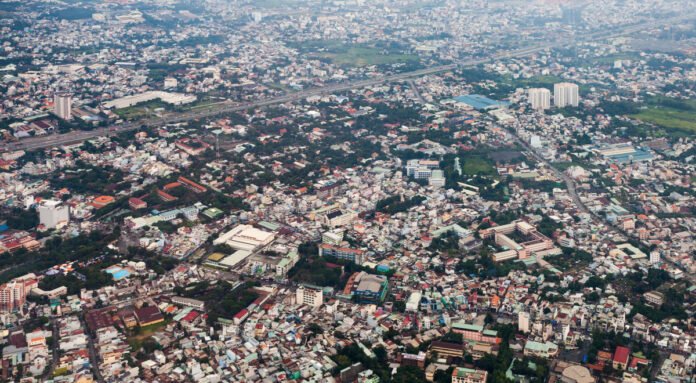Vietnam’s health insurance includes a solid public plan and an expanding private sector, serving various population needs like vulnerable groups, workers, wealthy individuals, and expatriates. Both systems offer financial protection and healthcare access but vary in coverage, cost, and service quality.
Key Differences
Vietnam’s public health insurance, driven by Social Health Insurance (SHI), is compulsory for most citizens and subsidized for children under six, the poor, students, and retirees. It guarantees universal access to essential healthcare in public hospitals. SHI generally includes inpatient and outpatient care, maternity services, chronic disease management, and preventive measures. Employees contribute 4.5% of their monthly salary, with 3% from employers and 1.5% from employees. Government subsidies assist disadvantaged groups.
In Vietnam, private health insurance is optional and mainly for expatriates, corporate workers, wealthy locals, and travelers. Companies such as Bao Viet, Pacific Cross, Luma Health, Bupa Global, and PVI Insurance provide adaptable plans with extensive coverage. These plans include dental, optical, international hospital access, and wellness services. Premium costs differ based on age, health, and plan specifics, typically ranging from a few hundred to several thousand USD each year.
Public insurance users endure crowded hospitals, long waits, and limited doctor choices, with services mainly in Vietnamese. Advanced diagnostics and brand-name drugs might not be fully covered. Conversely, private insurance offers quicker access to private clinics and international-standard hospitals, featuring English-speaking staff and modern facilities.
Key Similarities
Both public and private insurance aim to cut healthcare costs and boost access. They cover key services like hospitalization, outpatient care, and emergencies. Both sectors are adopting digital changes, providing online consultations, e-claims, and mobile apps.
In cities, more people are using two types of insurance: SHI for basic care and PHI for better services. This combination boosts patient satisfaction and offers more healthcare options.
Top 5 Public Health Insurance Schemes in Vietnam: Cost, Coverage, Accessibility, and Consumer Insights
Vietnam’s public health insurance is mainly managed by Social Health Insurance (SHI) and includes special plans for groups like children, students, the poor, and retirees. These government-run programs are crucial in providing affordable healthcare to most citizens. They focus on lowering personal healthcare costs, promoting health equity, and ensuring access to essential medical services. Here’s a concise look at Vietnam’s top five public health insurance plans, covering their costs, services, eligibility, financial setup, and user satisfaction.
1. Social Health Insurance (SHI)(Official website: https://vss.gov.vn/english)
- Cost: 4.5% of monthly salary (3% paid by employer, 1.5% by employee); government-subsidized for vulnerable groups
- Available Services/Coverage: Inpatient and outpatient care, maternity, chronic disease management, rehabilitation, preventive services, and basic prescription drugs.
- Eligibility: Mandatory for employees, civil servants, and students; subsidized enrollment for the poor, near-poor, and informal workers
- Core Financial Features: Pooled national fund managed by the Vietnam Social Security (VSS); cost-sharing (20% co-payment) in some cases
- Consumer Satisfaction Score: 78% – Users appreciate wide accessibility but often mention long wait times and inconsistent service quality at public hospitals.
2. Health Insurance for Children under 6(Official website: https://vss.gov.vn/english)
- Cost: Fully subsidized by the government (100% free)
- Available Services/Coverage: Full coverage for hospital visits, vaccinations, treatments, and medications at public healthcare facilities
- Eligibility: Automatically provided to all Vietnamese children under the age of six
- Core Financial Features: Entirely tax-funded; supports early childhood healthcare and preventive treatment
- Consumer Satisfaction Score: 85% – Highly rated by families, though limited by the quality of rural healthcare infrastructure in some areas.
3. Health Insurance for the Poor and Near-Poor(Official website: https://vss.gov.vn/english)
- Cost: Subsidized by the government; the poor pay nothing, and the near-poor pay a small percentage
- Available Services/Coverage: Basic medical care, hospitalization, treatment for chronic illnesses, and essential drugs
- Eligibility: Households officially classified as poor or near-poor by local authorities
- Core Financial Features: Premiums heavily subsidized by central and provincial governments; funds managed by VSS
- Consumer Satisfaction Score: 75% – Appreciated for increasing healthcare access, but many face barriers such as travel costs and limited facilities.
4. Health Insurance for Students(Official website: https://vss.gov.vn/english)
- Cost: Roughly 70% subsidized by the state; students or their families pay the remaining 30%
- Available Services/Coverage: Basic outpatient/inpatient services, injury treatment, and disease prevention services in school-linked or public facilities
- Eligibility: All students in public and private educational institutions from primary through tertiary level
- Core Financial Features: Premiums are pooled at school level and paid through annual or term-based installments
- Consumer Satisfaction Score: 72% – Considered valuable by students and parents, but effectiveness depends on the location and quality of partner hospitals.
5. Retiree and Pensioner Health Insurance(Official website: https://vss.gov.vn/english)
- Cost: Largely subsidized by the government or deducted from pension payments
- Available Services/Coverage: Chronic disease care, hospitalization, medication, diagnostics, and rehabilitation services
- Eligibility: Former civil servants, pensioners, and retirees registered with VSS
- Core Financial Features: Funded through a mix of pension contributions and government support; ensures continuity of care for the aging population
- Consumer Satisfaction Score: 77% – Valued for affordability and support in managing chronic conditions, though service quality varies by region.
Top 5 Private Health Insurance Providers in Vietnam: Cost, Coverage, Accessibility, and User Satisfaction
Vietnam’s private health insurance enhances the public system by providing personalized, flexible, high-quality care. Favored by expatriates, business professionals, and wealthy locals, these insurers offer access to private hospitals and international-standard clinics. Benefits include shorter wait times, English-speaking staff, and diverse services. Here are the top five private health insurance providers in Vietnam, detailing costs, services, eligibility, financial structure, and customer satisfaction.
1. Bao Viet Insurance(Official website: https://www.baoviet.com.vn)
- Cost: Varies by plan; from 2.5 million VND to 25 million VND/year (~$100–$1,000)
- Available Services/Coverage: Comprehensive plans including inpatient/outpatient care, surgery, critical illness, dental, maternity, and international emergency coverage (e.g., An Gia, Intercare)
- Open for: Vietnamese citizens and expats; individual, family, and corporate plans
- Core Financial Features: Flexible deductibles; direct billing with top hospitals; premium discounts for group or long-term contracts
- Consumer Satisfaction Score: 83% – Users highlight affordability, diverse plans, and easy hospital access but note occasional delays in reimbursement.
2. Pacific Cross Vietnam(Official website: https://www.pacificcross.com.vn)
- Cost: Premiums range from 5 to 40 million VND/year (~$200–$1,600), depending on age and coverage
- Available Services/Coverage: Inpatient/outpatient care, dental, maternity, optical, international travel coverage, emergency evacuation
- Open for: Expats, families, and businesses; highly customizable plans
- Core Financial Features: Global and Vietnam-only options; direct billing with a wide network; multiple currency payment options
- Consumer Satisfaction Score: 87% – Particularly favored by expats for customer support, policy transparency, and English-language documentation.
3. Luma Health Vietnam(Official website: https://www.lumahealth.com)
- Cost: Starts from 8 million VND/year ($320) and can go above 50 million VND/year ($2,000) for premium international coverage
- Available Services/Coverage: Inpatient/outpatient, dental, vision, maternity, mental health, wellness checkups, emergency evacuation
- Open for: Expats, companies, and high-net-worth locals
- Core Financial Features: Tailored expat-friendly packages; wide direct billing network; 24/7 multilingual support
- Consumer Satisfaction Score: 89% – Known for outstanding service quality, modern platform, and comprehensive coverage flexibility.
4. Bupa Global(Official website: https://www.bupaglobal.com)
- Cost: Premium plans typically start at $1,500/year and go up to $10,000+/year, depending on location and benefits
- Available Services/Coverage: Global major medical, wellness, maternity, dental, chronic disease management, medical repatriation
- Open for: Expats, frequent international travelers, high-income earners
- Core Financial Features: Worldwide hospital access; high annual coverage limits; choice of deductibles and coinsurance
- Consumer Satisfaction Score: 91% – Highly rated for premium global care and service, though cost may be prohibitive for many locals.
5. PVI Insurance(Official website: https://www.pvi.com.vn)
- Cost: Plans range from 2 to 15 million VND/year (~$80–$600), depending on coverage level
- Available Services/Coverage: Inpatient, outpatient, accident, critical illness, and corporate group health plans
- Open for: Vietnamese citizens, small businesses, and corporate clients
- Core Financial Features: Strong local partnerships; customizable group benefits; fast electronic claim handling
Consumer Satisfaction Score: 80% – Appreciated for value and efficiency in urban areas, though less comprehensive than international plans.
READ MORE: Private and public health insurance of Thailand (Make informed choices)


